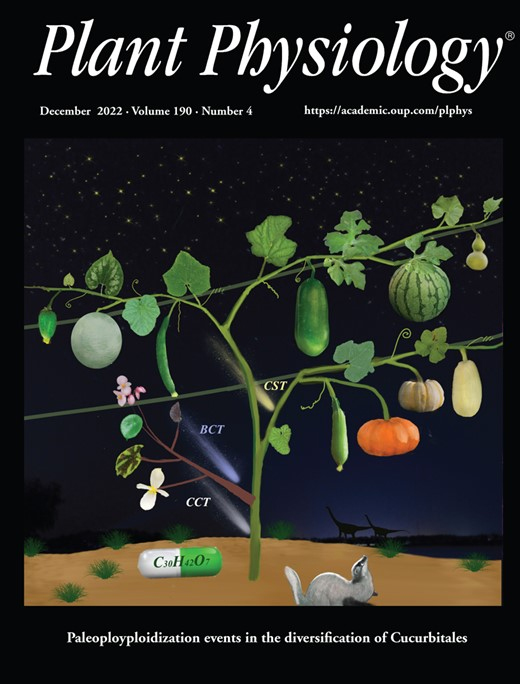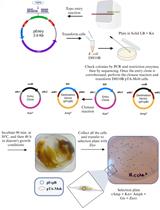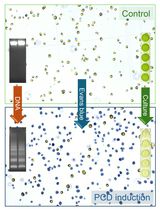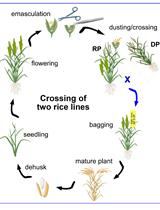- EN - English
- CN - 中文
Evaluating Plant Drought Resistance with a Raspberry Pi and Time-lapse Photography
用树莓派和延时摄影评估植物抗旱性
发布: 2023年01月20日第13卷第2期 DOI: 10.21769/BioProtoc.4593 浏览次数: 2626
评审: Ansul LokdarshiRicardo Urquidi CamachoWan-Jun Zhang
Abstract
Identifying genetic variations or treatments that confer greater resistance to drought is paramount to ensuring sustainable crop productivity. Accurate and reproducible measurement of drought stress symptoms can be achieved via automated, image-based phenotyping. Many phenotyping platforms are either cost-prohibitive, require specific technical expertise, or are simply more complex than necessary to effectively evaluate drought resistance. Certain mutations, allelic variations, or treatments result in plants that constitutively use less water. To accurately identify genetic differences or treatments that confer a drought phenotype, plants from all experimental groups must be subjected to equal levels of drought stress. This can be easily achieved by growing and imaging plants that are grown in the same pot. Here, we provide a detailed protocol to configure a Raspberry Pi computer and camera module to image seedlings of multiple genotypes growing in shared pots and to transfer images and metadata via the cloud for downstream analyses. Also detailed is a method to calculate percent soil water content of pots while being imaged to allow for comparison of stress symptoms with water availability. This protocol was recently used to uncouple differential water usage from drought resistance in a dwarf Arabidopsis thaliana mutant chiquita1-1/cost1compared to the wild-type control. It is cost effective, suitable for any plant species, customizable to various biological questions, and requires no prior experience with electronics or basic software programming.
Keywords: Drought resistance (抗旱性)Background
Drought stress symptoms can be qualitatively and quantitatively measured via image-based phenotyping. Imaging plant growth and the visual onset of stress symptoms results in greater sensitivity and data availability than what can be achieved from visual observations or endpoint analysis alone (Mutka and Bart, 2014; Tovar et al., 2018). Many protocols to measure plant stress via image analysis involve either a high up-front cost, a large experimental workspace, or integration of and proficiency with complex analytical software (Shakoor et al., 2017; Tovar et al., 2018). In contrast to these approaches, we have developed a simple, modular, low-cost protocol using a Raspberry Pi–controlled camera (which together require approximately $40 USD) to correctly evaluate drought resistance. We define drought resistance as any combination of plant strategies to cope with insufficient water availability required for maximum plant growth and reproduction, namely drought tolerance, drought avoidance, and drought escape (Blum, 2011; Deikman et al., 2012; Lawlor, 2013). Common plant responses to low water availability include increased root growth or maintenance of cell turgor via increased osmolyte production. Imaging plants as described in this protocol cannot specifically differentiate between drought avoidance and tolerance strategies. When paired with additional assays, however, both drought tolerance and avoidance can be quantified, as we recently demonstrated (Ginzburg et al., 2022). Drought escape (via earlier flowering time in response to reduced soil water content) can readily be quantified via time course imaging. This protocol requires no previous knowledge of software programming and requires only a small amount of space (approximately 1.5 m3 needed for 16 pots with Arabidopsis seedlings; Figure 4). While this protocol is suitable for any plant species, larger species or sample sizes may require additional space.
Some reports of image-based drought phenotyping platforms do not involve growing different genotypes together in the same pot or correcting for differences in % soil water content (SWC) between genotypes that are grown in separate pots (Kim et al., 2020). Experiments conducted without these crucial controls can yield potentially misleading results due to genotype-specific differences in water-use requirements (Lawlor, 2013). To account for these differences when evaluating drought resistance, soil water content for each genotype needs to be kept uniform throughout the drought treatment for all genotypes. This can be easily achieved, for example, by growing plants together in the same pot (Ginzburg et al., 2022), or, if in separate pots, by using soil moisture probes (Miralles-Crespo and van Iersel, 2011) or gravimetrically (Granier et al., 2006; de Ollas et al., 2019).
The persistence of reports that equate delayed onset of stress symptoms with drought resistance goes against established knowledge and slows progress in identifying true drought phenotypes (Lawlor, 2013). The protocol described here was recently used to differentiate between drought resistance and prolonged survival due to lower water usage in a dwarf Arabidopsis thaliana mutant chiquita1-1/cost1 (Ginzburg et al., 2022). Because plant responses to drought can vary depending on plant species, developmental stage, and degree of stress, there is no single set of measurements that can capture a drought phenotype in its entirety. Therefore, this protocol does not prescribe or outline in detail any specific measurements of plant stress. Rather, it provides readers with a foundation to properly set up a comparative drought experiment and capture images throughout the experiment to use for whichever downstream analyses are most appropriate to the experimental design and biological question(s). The straightforward methodology outlined here will be a valuable resource to the plant science community at large, not only for studying plant responses to drought but for any research requiring accurate visual comparisons of plant growth and development.
Equipment
Raspberry Pi–related equipment
Raspberry Pi (model 3 or newer)
Micro SD card (should have 6 GB or more of storage)
Micro USB power cable
Camera module: Minimum specifications (i.e., lens resolution, pixels, frame rate, etc.) will vary based on the distance between the lens and samples, sample size, and external light source provided. An Arducam M12 lens (model B0031; 5 MP 2,592 × 1,944 resolution, 4 mm focal length) was used in this protocol to image Arabidopsis seedlings from approximately 75 cm above the pots.
Camera cable
Note: If using a Raspberry Pi Zero W, you will need a smaller cable connection to insert into the Raspberry Pi.
Monitor with HDMI port
HDMI cable
Note: If using a Raspberry Pi Zero W, you will need a mini-HDMI to HDMI cable.
Keyboard and mouse
Mounting-related equipment
Adhesive or
Bungee cables or
Mounting stand (see Tovar et al., 2018)
Optional
Case for Raspberry Pi and camera module
Plant growth–related equipment
Pots: Appropriate size depends on species and number of plants grown in each pot. For growing two Arabidopsis seedlings together in a single pot, it is recommended to use square pots of at least 40 cm 2.
Soil: Any horticultural or potting soil/mix is suitable. PRO-MIX HP Mycorrhizae potting soil (Premier Tech Horticulture, Quakertown, PA) is suitable for a wide range of species. Additional amendments may be added based on species-specific requirements.
Scale: For small plants grown in small pots, such as Arabidopsis , use a scale sensitive to 0.1 g. A scale sensitive to 1.0 g is suitable for larger plants and bigger pots.
Plastic cover
Oven: It should be capable of reaching 45°C.
Adhesive: It should be strong enough to support the weight of the Raspberry Pi, lens, and power cable (approximately 20 g).
Procedure
文章信息
版权信息
© 2023 The Authors; exclusive licensee Bio-protocol LLC.
如何引用
Ginzburg, D. N. and Rhee, S. Y. (2023). Evaluating Plant Drought Resistance with a Raspberry Pi and Time-lapse Photography. Bio-protocol 13(2): e4593. DOI: 10.21769/BioProtoc.4593.
分类
植物科学 > 植物生理学 > 非生物胁迫
生物科学 > 生物技术
您对这篇实验方法有问题吗?
在此处发布您的问题,我们将邀请本文作者来回答。同时,我们会将您的问题发布到Bio-protocol Exchange,以便寻求社区成员的帮助。
Share
Bluesky
X
Copy link














